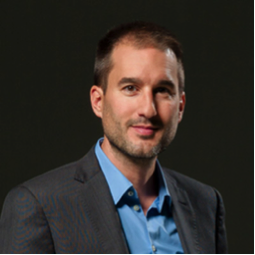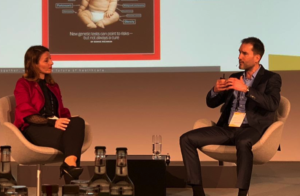The biofabrication race is on. Scientists around the world are competing and the rise of biotechnological commercial players has diversified the field, moving fast to keep up with high expectations from scientists, healthcare providers and pharmaceutical companies eager to take the research to clinical therapy. But this is no easy transition, and even though bioprinting has moved the field forward, it is not as close to patients as everyone hopes it would be. One new company is now bringing a different message, one of possibility and hope that could pave the way for the future of healthcare.
 Newly launched mimiX biotherapeutics is developing the next generation of biofabrication solutions to provide Point-of-Care tissue engineering for regenerative, personalized and precision medicine. Founded by Marc Thurner, who just this year left his previous creation regenHU and is now beginning a new chapter in his life, the startup will commercialize a new bioprocessing technology called Sound Induced Morphogenesis (SIM). Off to a new start, Thurner–now the CEO of mimiX biotherapeutics–spoke with 3DPrint.com about the scientific tool he expects could revolutionize regenerative medicine and diagnostics, and which he expects to launch commercially by next summer.
Newly launched mimiX biotherapeutics is developing the next generation of biofabrication solutions to provide Point-of-Care tissue engineering for regenerative, personalized and precision medicine. Founded by Marc Thurner, who just this year left his previous creation regenHU and is now beginning a new chapter in his life, the startup will commercialize a new bioprocessing technology called Sound Induced Morphogenesis (SIM). Off to a new start, Thurner–now the CEO of mimiX biotherapeutics–spoke with 3DPrint.com about the scientific tool he expects could revolutionize regenerative medicine and diagnostics, and which he expects to launch commercially by next summer.
“Could we accelerate the biofabrication revolution in the healthcare industry?” wondered Thurner back in June.
This is a big question and one which he believes to have found the answer.
“Just after I left regenHU, I began touring the countryside with my family. But I quickly went from a camping experience to a new tech venture. Tiziano Serra (the inventor of 3D-SIM technology) came to see me claiming he had an interesting technology in the field of biofabrication. After spending a week looking over some of the amazing scientific results and data he had developed throughout the last six years I decided this was an opportunity I couldn’t miss,” revealed Thurner. “At the time, I realized that the technology most of the bioprinting companies have, which are based on conventional extrusion systems, are a great tool for scientific research but will probably never make the translation into the clinical environment,” he revealed.
Instead, mimiX biotherapeutics’ technology has already demonstrated – with scientific evidence – that it offers tissue engineering strategies to overcome today’s obstacles, for example, the creation of dense networks of cell suitable for micro vascularization.
According to Thurner, bioprinting using conventional dispensing systems is good for science but much too complicated for clinical use due to several critical hurdles including scalability, affordability, manufacturing, and because they entail complicated and labor-intensive processes.
He also claims that the current cell therapy available is costly and time-consuming since patients’ own biopsies are sent to labs where cells are isolated and amplified to create artificial tissue using 3D printing (or other more conventional methods) so that they can – weeks later – be transplanted back into the patient. It just takes too long.
“It seems clear that we need to overcome this rudimentary process which is not stable and a logistical nightmare. Instead, mimiX biotherapeutics opens the door to manufacturing patient-specific tissues directly in the operating room (OR), enhancing patient’s autologous biological materials, for their own treatment. So, we see an opportunity to reduce the cost of the tissue engineering procedure. Moreover, we hope that in the future, most medical practitioners will be able to use the patient’s own biological material to process it directly in the OR without the need of any specific expertise in engineering or robotic tools required by typical bioprinters.”
Delivering their technology to the clinical environment is the ultimate goal for the startup, which is headquartered in Neuchâtel, Switzerland. Thurner hopes that one day every hospital will have a 3D-SIM system in the OR, to enhance the biomaterial that they obtain from the patient, and create tissue that is ready to be implanted within a few minutes.
Thurner went on to say that “this could be possible within a timeframe of 10 years because we are simplifying the process and because the materials don’t have to go out of the OR. This means that beyond patient care, we are also offering a solution to one of the biggest problems the healthcare industry has: extremely high costs.”
The 3D-SIM technology behind mimiX biotherapeutics is nearly a decade old. It was developed by Tiziano Serra, a Research Scientist at the AO Research Institute in Davos, Switzerland, with the objective of creating well-defined biological patterns that self-assemble into functional tissues using sound waves. A process Serra has poetically defined as “orchestrating biology”. The company states that SIM is a cell and biologics patterning process to create a 3D biological template in which cells induce morphogenesis through a self-assembly mechanism. SIM technology offers a highly efficient strategy creating dense and organized cell patterns.
“The beauty behind SIM is that Serra began exploring its potential many years ago and already understands which type of patterns induce different types of tissue engineering strategies. Our current focus is on micro vascularization, which is the big bottleneck in regenerative medicine.”
Our universe is immersed in waves, and mimiX biotherapeutics machines transmit them. A proprietary Labware is first placed on a type of speaker and depending on the sound emitted, the waves that are generated transmit energy to the labware and the cell-cultured media. The cells will then be patterned in different forms, such as circular, square, star shape or in agglomerates to trigger a self-assembly process. The company plans to deliver its novel instrument as a scientific tool next year for the research community, allowing them to explore the potential of what they could achieve when switching from conventional bioprinting to SIM. The small device fits any biosafety cabinet, and Thurner hopes that it will exponentially trigger the intellectual property behind the technology.
The company is driven by experienced healthcare, life science managers and scientists and benefits from cooperation with the AO Foundation, a nonprofit organization dedicated to improving the care of people with musculoskeletal injuries and their sequels through research, development, education and quality assurance.
Thurner has already begun setting up strategic partnerships to move forward with research and development, clinical trials, and luring strategic investors to join the venture. He is already preparing for a Series A round of financing to go to market with his prototype and start a clinical journey.
“I am convinced we need to work with an open innovation mindset because the field of biofabrication is so versatile. To enable a revolution we need to bring together our expertise in hardware and software, along with cell therapy, clinical and healthcare knowledge. Even more so, our device will be an ideal lab instrument with the potential to be used in many fields, from biotechnology to drug discovery,” concluded the expert.
Subscribe to Our Email Newsletter
Stay up-to-date on all the latest news from the 3D printing industry and receive information and offers from third party vendors.
You May Also Like
Profiling a Construction 3D Printing Pioneer: US Army Corps of Engineers’ Megan Kreiger
The world of construction 3D printing is still so new that the true experts can probably be counted on two hands. Among them is Megan Kreiger, Portfolio Manager of Additive...
US Army Corps of Engineers Taps Lincoln Electric & Eaton for Largest 3D Printed US Civil Works Part
The Soo Locks sit on the US-Canadian border, enabling maritime travel between Lake Superior and Lake Huron, from which ships can reach the rest of the Great Lakes. Crafts carrying...
Construction 3D Printing CEO Reflects on Being Female in Construction
Natalie Wadley, CEO of ChangeMaker3D, could hear the words of her daughter sitting next to her resounding in her head. “Mum, MUM, you’ve won!” Wadley had just won the prestigious...
1Print to Commercialize 3D Printed Coastal Resilience Solutions
1Print, a company that specializes in deploying additive construction (AC) for infrastructure projects, has entered an agreement with the University of Miami (UM) to accelerate commercialization of the SEAHIVE shoreline...

































